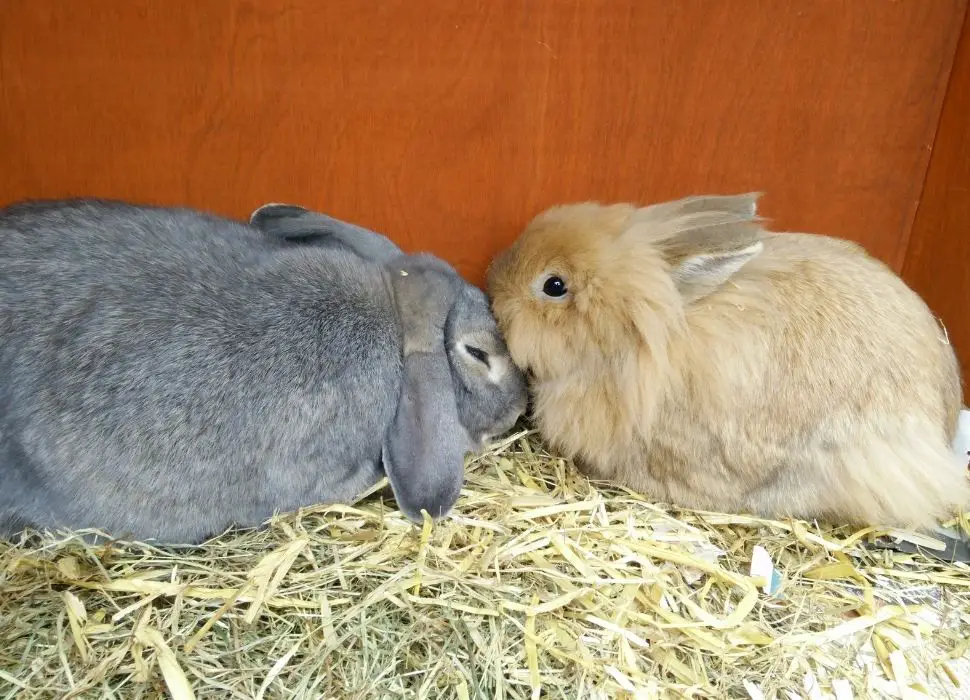When it comes to rabbits, providing them with a clean and appropriate place to go to the bathroom is essential for their health and well-being. However, if you have multiple rabbits, you may wonder if they can share a litter box. In this article, we will explore the concept of rabbits sharing a litter box, the benefits and challenges of doing so, and how to effectively manage this situation.
Benefits of Rabbits Sharing a Litter Box
Rabbits are social animals that thrive on companionship. Allowing them to share a litter box can have several benefits. Firstly, it promotes bonding between rabbits as they engage in natural behaviors such as grooming and scent-marking together. This can strengthen their relationship and reduce stress. Secondly, it can save space and simplify litter box maintenance, as multiple rabbits can use the same litter box, reducing the need for multiple boxes.
Factors to consider when allowing rabbits to share a litter box include the rabbits’ age, size, and personality. Young rabbits, in particular, may benefit from sharing a litter box as they learn from each other’s behaviors. However, it’s important to monitor their interactions to ensure they get along and there is no bullying or aggressive behavior.
Rabbits’ Natural Behavior in the Wild
In the wild, rabbits live in social groups where they share living spaces and resources, including bathroom areas. They have a natural tendency to use the same spot repeatedly for elimination, which helps them establish a familiar scent territory. Domesticated rabbits still retain some of these instincts, and they can adapt to sharing a litter box with proper introduction and management.
Steps to Introduce Rabbits to a Shared Litter Box
Introducing rabbits to a shared litter box should be done gradually and carefully to ensure a smooth transition. Here are some steps to follow:
Step 1
Set up individual litter boxes initially When introducing rabbits to a shared litter box, it’s important to start with individual litter boxes for each rabbit. This allows them to establish their own territory and get used to the idea of using a litter box.

Step 2
Place the litter boxes side by side Once the individual litter boxes are set up, place them side by side in the same area. This allows the rabbits to see and smell each other while using their own litter boxes, helping them get familiar with each other’s scents.
Step 3
Gradually merge the litter boxes After a few days of side-by-side placement, you can start gradually merging the litter boxes. You can do this by removing the barrier between the litter boxes and allowing the rabbits to freely move between them. This helps them associate the shared litter box with a familiar scent.
Step 4
Observe and monitor their behavior Keep a close eye on your rabbits’ behavior during the introduction process. If they show any signs of aggression or territorial behaviors, such as fighting or marking, separate them and go back to using individual litter boxes for a while longer.
Step 5
Use positive reinforcement Reward your rabbits with treats or praise when they use the shared litter box. Positive reinforcement helps encourage them to associate the shared litter box with a positive experience and reinforces good litter box habits.
Step 6
Gradually remove individual litter boxes As your rabbits get more comfortable using the shared litter box, you can start gradually removing the individual litter boxes. This should be done slowly and gradually, over a period of time, to ensure that the rabbits are fully adapted to the shared litter box.
Step 7
Provide enough space and resources Make sure to provide enough space and resources for your rabbits to comfortably share a litter box. This includes having a litter box large enough for both rabbits to fit in comfortably, providing ample hay, water, and hiding spots, and ensuring that the rabbits have enough space to move around without feeling crowded.
Step 8
Keep monitoring and adjusting Continue to monitor your rabbits’ behavior and adjust your approach as needed. If any issues arise, such as territorial behaviors or litter box accidents, be patient and make the necessary changes to ensure a smooth transition to a shared litter box.
Remember, every rabbit is unique, and the introduction process may take time and patience. It’s important to observe and understand your rabbits’ behaviors and adjust your approach accordingly. With consistency, positive reinforcement, and proper care, your rabbits can learn to share a litter box and live harmoniously together.
Monitoring Behavior and Health
Once rabbits are sharing a litter box, it’s important to monitor their behavior and health to ensure their well-being. Keep an eye out for any changes in their litter box habits, such as changes in frequency, consistency, or color of their urine and feces, as it can indicate underlying health issues. Additionally, monitor their overall behavior, appetite, and energy levels to detect any signs of stress or discomfort. Consult with a veterinarian promptly if you notice any abnormalities to ensure timely intervention.
Benefits of Rabbits Sharing a Litter Box for Bonding
Sharing a litter box can have positive effects on the bonding process between rabbits. Rabbits are social animals and establishing a common bathroom area can promote bonding behaviors such as grooming, scent-marking, and play. It can also help reduce stress and anxiety, as rabbits feel more secure and comfortable when they are together. Sharing a litter box can be particularly beneficial for bonded pairs or groups of rabbits as it strengthens their relationship and fosters a harmonious living environment.
Potential Challenges and How to Overcome Them
While rabbits sharing a litter box can have many benefits, it’s important to acknowledge that there can be challenges as well. Some potential challenges include territorial behaviors, competition for resources, and differences in litter box habits. However, these challenges can be managed with proper introduction, monitoring, and intervention. By providing enough space, resources, and positive reinforcement, as well as addressing any conflicts or health issues promptly, rabbits can learn to share a litter box effectively.
Common Misconceptions About Rabbits Sharing a Litter Box
There are some common misconceptions about rabbits sharing a litter box that need to be addressed. One misconception is that rabbits will naturally fight or become aggressive when sharing a litter box. While territorial behaviors can occur, proper introduction, monitoring, and management can help prevent conflicts. Another misconception is that rabbits will not use a shared litter box, as they are inherently territorial. However, rabbits can adapt to sharing a litter box with proper guidance and care. It’s important to understand that each rabbit has its own personality and behavior, and results may vary. With patience, consistency, and proper management, rabbits can learn to share a litter box successfully.
Conclusion
In conclusion, rabbits can share a litter box if introduced and managed properly. It’s important to understand that rabbits are social animals and can adapt to sharing a litter box with the right approach. Proper introduction, gradual transition, mixing of familiar scents, and monitoring of behavior and health are key factors in successfully getting rabbits to share a litter box. Managing territorial behaviors, providing enough space and resources, and using positive reinforcement is essential in preventing conflicts and promoting a harmonious living environment.
Remember, every rabbit is unique and may have different behaviors and preferences. It’s important to observe and understand your rabbits’ individual needs and adjust your approach accordingly. With patience, consistency, and proper care, rabbits can learn to share a litter box and build a strong bond with each other.
In conclusion, rabbits can share a litter box with proper introduction, gradual transition, and management. By following the tips and guidelines mentioned in this article, you can successfully get your rabbits to share a litter box and foster a healthy and harmonious living environment for them. Remember to monitor their behavior and health, provide enough space and resources, and use positive reinforcement to promote bonding behaviors and prevent conflicts. With patience, consistency, and proper care, your rabbits can happily share a litter box and strengthen their bond with each other.
Frequently Asked Questions
Can I put multiple rabbits in the same litter box right away?
It’s not recommended to put multiple rabbits in the same litter box right away. Proper introduction and gradual transition are crucial to ensure successful litter box sharing.
What if my rabbits are not using the shared litter box?
If your rabbits are not using the shared litter box, you may need to go back to the individual litter box setup and reintroduce them slowly using the steps mentioned earlier.
Should I use scented or unscented litter for rabbits?
It’s recommended to use unscented litter for rabbits as scented litter may contain harmful chemicals that can be toxic to them.
How often should I clean the shared litter box?
Rabbits prefer a clean litter box, so it’s important to clean it regularly, at least once a day, to maintain hygiene and prevent odor.
What if my rabbits are showing territorial behaviors?
If your rabbits are showing territorial behaviors, such as fighting or marking their territory, it’s important to manage and intervene promptly. Providing enough space, resources, and positive reinforcement, as well as separating them if necessary, can help manage territorial behaviors.
